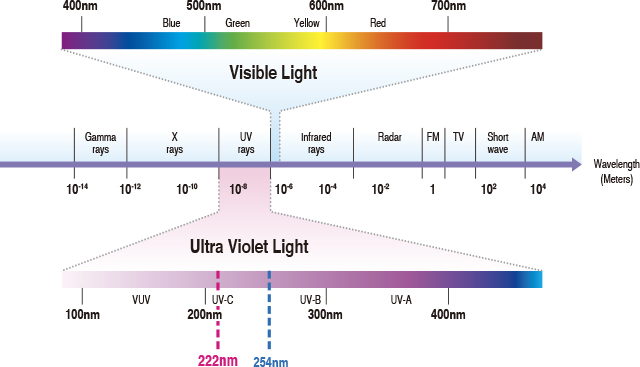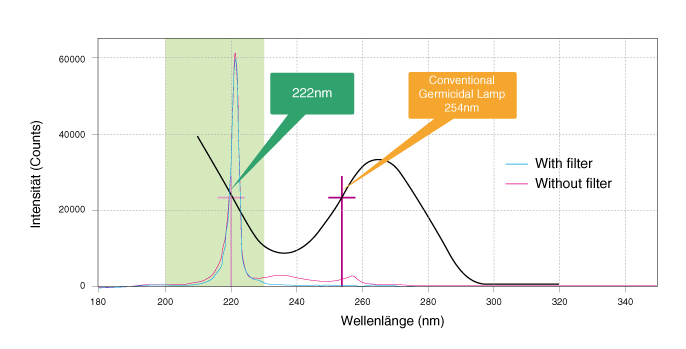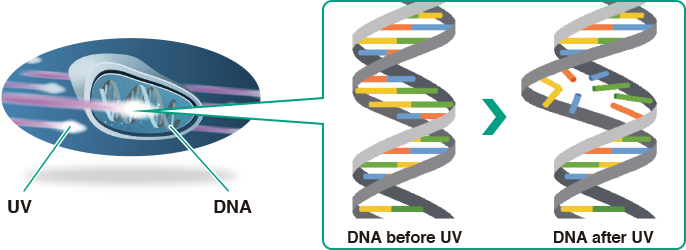Principle and efficacy of ultraviolet disinfection
Ultraviolet light is broadly categorized as UVA, UVB or UVC, according to wavelength. All of these wavelengths are included in electromagnetic radiation emitted by the sun, but only UVA and UVB pass through the ozone layer and reach the ground, where they are best known for causing sunburn and skin cancer. Although UVC is absorbed within the ozone layer, its germicidal effect is well known, and has been artificially put to work in disinfecting lamps. However, UVC can also be harmful, which has limited its applications.

A characteristic of UVC is that it is absorbed by the DNA and RNA of bacteria and viruses. Absorption of ultraviolet by the DNA or RNA in a cell or virus causes its destruction through the formation of cyclobutane pyrimidine dimers that make it impossible for the bacteria or virus to replicate. They then die. This is the mechanism by which ultraviolet kills bacteria and renders viruses inert.
Accordingly, there are in principle no bacteria or viruses which cannot be killed or inactivated by UVC. Nor is there any concern that germs may mutate and become resistant to UVC in the way they often become resistant to drugs.


